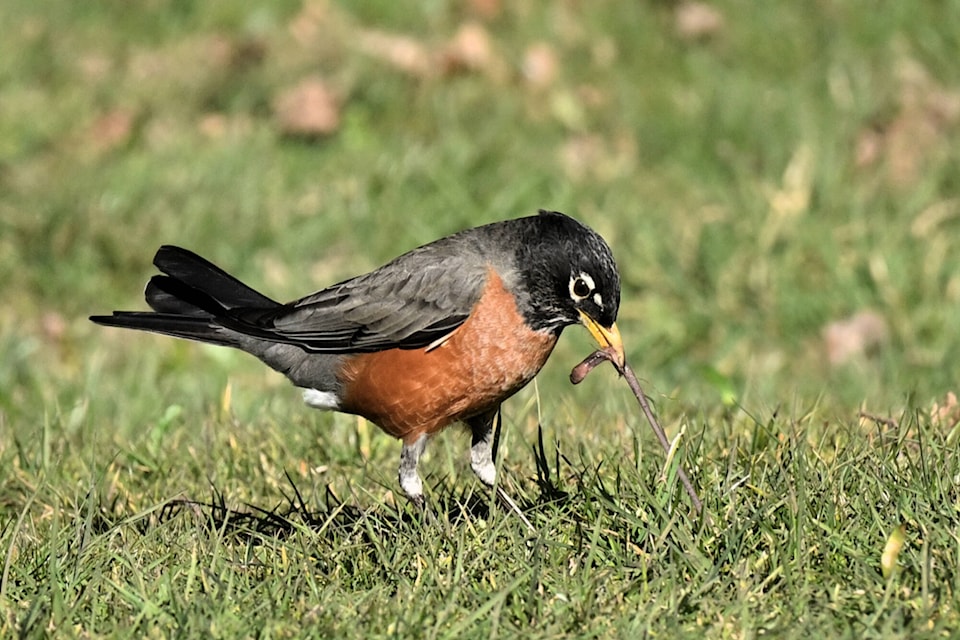By John G. Woods
Contributor
Across the Shuswap and well before dawn, American robins have begun a morning ritual of bringing in the day with a song.
After first warming their voices with a clamor of calls, they transition into a melody of their signature songs –each one pronounced as a unique series of liquid whistles.
While we may try to remember these songs with the upbeat English words cheerily, cheer-up, cheerily, cheer-up, cheer-up, their intent in the robin world is most likely quite different.
To another male robin, the songs are likely understood as, “I am here, go away, I live here, go-away.”
If you are a female robin looking for a suitor, the intent is most likely, “Here I am, I am strong, come nest, I’ll feed our chicks, I’m the best!”
Not only one of the most familiar songbirds in North America, robins also are amongst the most adaptable. When their breeding season is in full swing, you can hear them from the eastern coast of Newfoundland to the shores of the Pacific at Tofino. Ecologically, they occupy niches from valley bottom to near mountain top, and from the southern United States to the Arctic treeline.
Read more: Column: Ravens signal spring in the Shuswap
Read more: Column: Shuswap winters brighten with the song of black-capped chickadees
Robins may be the first to sing each day, but they are really the prelude to a host of other song birds that will tune in, when the time is right. One morning this March, the next singer to join the robin chorus was a male song sparrow, followed by a male dark-eyed junco, then a male varied thrush. And so, the early dawn chorus unfolded despite the temperature stuck at -1 C!
After a flurry of dawn songs, the males will turn their attention to a never-ending search for food. As soon as the ground warms enough for earthworms to appear, robins run across our lawns looking for their favourite summer prey. With appetites that can include a worm or two every minute, it is no wonder that robins spend so much time in clear view foraging on our lawns.
Run, hop, freeze. Look, aim, squeeze. Tug-a-worm, tug-a-worm, swallow. Repeat. Daytime is feeding time for robins.
As sunset approaches, the final movement of the daily chorus begins, but in reverse order. After most other birds have stopped singing, the robins are still delivering their tunes at sunset and beyond. Their music peters out with a few sporadic calls as the creatures of the day give way to the creatures of the night.
newsroom@saobserver.net
Like us on Facebook and follow us on Twitter
Sign up for our newsletter to get Salmon Arm stories in your inbox every morning.
